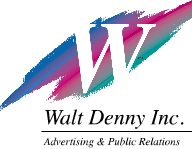 |
 |
 |
 |
 |
 |
 |

Differences between Facebook and Instagram ensure marketers reach a broader swath of intended customers/prospects than they might on either site alone. Given Facebook’s huge user base, ads are viewed by a widely varied audience. By contrast, Instagram ads reach a younger demographic many brands covet. By advertising on both platforms, brands can benefit from a huge combined user base of 3.7 billion people. In addition, combining efforts by, say, driving traffic on Facebook and retargeting initially non-converted folks on Instagram can boost conversion rates. Brand marketers applaud differences that prove complementary. They expose ads to larger audiences.

|
 |
 |
 |
 |
 |
 |
 |
 |
 |

|
 |
 |
 |
 |
 |
 |
 |
 |
 |
 |
 |
 |
Facebook’s and Instagram’s similarities are further reasons to consolidate them. Ads on both channels are affordable and customizable. The ability to tailor advertising is key, considering each channel allows brand marketers to segment their audiences and target customers and prospects based on such categories as age and interests. Also, brands can gain synergies using one channel to promote on the other. Example: An Instagram contest or giveaway can be promoted through a targeted Facebook ad. The similar-yet-complementary nature of the two ensures better results together than apart.
We’ve reported several important reasons to merge your Facebook and Instagram ad approaches to give your campaigns greater firepower. Read on to learn a few more.
- Simultaneous launch. Facebook permits campaigns to be simultaneously launched on both Facebook and Instagram, and also enables the fine tuning of details ranging from the ad budget to audience segmentation, targeting and ad formats.
- Manage DMs. Integrating Facebook and Instagram allows brand marketers to reap real time savings by managing Instagram Direct Messages from the Facebook page inbox, and also allows them to more conveniently integrate third-party applications.
- Leverage tools. Running the same ad campaigns on Facebook and Instagram at the same time can increase brands’ reach, grow customer engagement and propel sales, particularly if the assessment tools each platform makes available are optimized.
|
 |
 |
 |
 |
 |
 |
 |
 |
 |
 |
 |
 |
 |
 |
 |
 |
 |
 |
 |
 |
 |
|
 |
 |
 |
 |
 |
 |
 |
 |
 |
|
 |
 |
 |
 |
 |
 |
 |
|





